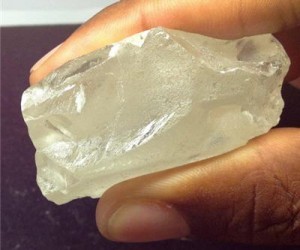Ghana creates new task force to fight illegal mining
Ghana's government has created a task force to fight illegal gold and diamond mining in the country.
The president blamed the illegitimate practice for costing the country millions of dollars in lost revenue due to the environmental degradation, reports the Africa Review.
As well, in recent months, the situation has gotten worse with miners taking the law into their own hands. Two Chinese citizens were arrested for shooting at two Ghanaians and another 80 are in immigration custody waiting to be deported.
The president also vowed to pursue local citizens and ministers who are involved with illegal activities.
Additionally, the government said it would support sustainable small-scale mining and improve infrastructure.
The task force will also close legal loopholes allowing gold exporters to trade in secret. Further, it will encourage the local purchase and export of minerals — right now only privately owned foreign companies are licenced to export independently.

The president blamed the illegitimate practice for costing the country millions of dollars in lost revenue due to the environmental degradation, reports the Africa Review.
As well, in recent months, the situation has gotten worse with miners taking the law into their own hands. Two Chinese citizens were arrested for shooting at two Ghanaians and another 80 are in immigration custody waiting to be deported.
The president also vowed to pursue local citizens and ministers who are involved with illegal activities.
Additionally, the government said it would support sustainable small-scale mining and improve infrastructure.
The task force will also close legal loopholes allowing gold exporters to trade in secret. Further, it will encourage the local purchase and export of minerals — right now only privately owned foreign companies are licenced to export independently.


 ready to reap the profits at a later
date.
ready to reap the profits at a later
date.


